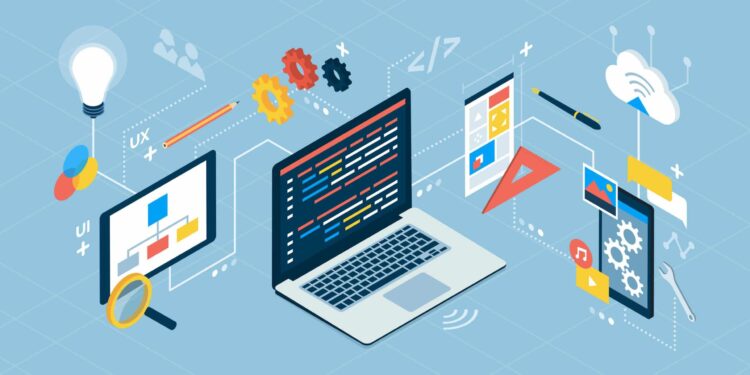As the boundaries between industries blur and innovation accelerates at an unprecedented pace, the World Economic Forum’s “Technology Convergence Report 2025” arrives as a timely compass in the evolving landscape of global technology. This report delves into the intricate interplay of emerging technologies-artificial intelligence, biotechnology, advanced materials, and beyond-revealing how their fusion is poised to reshape economies, societies, and the very fabric of daily life. By unpacking these converging forces, the report offers valuable insights for policymakers, business leaders, and innovators striving to navigate the complex horizon where opportunity meets uncertainty. In this article, we explore the key themes and implications of the 2025 report, shining a light on the transformative potential of technology convergence in the years to come.
Emerging Synergies Shaping the Future of Global Industries
In a rapidly evolving global landscape, the fusion of distinct technological domains is catalyzing unprecedented innovation. Industries once siloed by traditional boundaries are now interlocking through breakthroughs in artificial intelligence, biotechnology, and advanced materials. This convergence is not merely additive; it creates exponential value by unlocking new capabilities such as predictive healthcare, autonomous manufacturing, and decentralized finance. Leaders across sectors are leveraging these synergies to enhance operational agility, cultivate resilience, and accelerate sustainable growth in ways previously unimaginable.
Several key vectors are shaping this phenomenon:
- Data democratization: Expanding access to big data analytics across traditional and emerging markets.
- Collaborative ecosystems: Partnering networks that blend start-ups, corporates, and regulators to co-create solutions.
- Adaptive infrastructure: Flexible platforms that integrate IoT, 5G, and cloud computing to enable real-time innovation.
These forces signify a systemic shift where innovation is co-dependent on cross-industry dialogue and continuous learning – a hallmark of the future’s hyper-connected economy.
| Industry Pairing | Primary Synergy | Outcome |
|---|---|---|
| Healthcare & AI | Enhanced diagnostics | Personalized treatment plans |
| Energy & IoT | Smart grids | Improved energy efficiency |
| Manufacturing & Robotics | Automation | Increased production agility |
In-Depth Analysis of Cross-Sector Innovations and Their Impacts
Across industries, the merging of technologies such as artificial intelligence, biotechnology, and sustainable energy solutions is reshaping the global economic landscape. This convergence fosters an ecosystem where traditional boundaries blur, enabling unprecedented collaboration and acceleration of innovation cycles. For example, the integration of AI-driven analytics with biotech has revolutionized personalized medicine, leading to more precise diagnostics and tailored treatment plans. Simultaneously, the fusion of renewable energy technologies with IoT networks has sparked smarter grids, reducing waste and enhancing resilience against environmental challenges.
Key sectors experiencing transformative impacts include:
- Healthcare: Enhanced patient outcomes through predictive diagnostics and automated care systems.
- Manufacturing: Streamlined production lines with adaptive automation and real-time monitoring.
- Transportation: Emergence of autonomous electric fleets reducing carbon footprints.
- Finance: Deployment of blockchain and AI for transparent, efficient transaction processing.
| Sector | Dominant Innovation | Projected Impact by 2030 |
|---|---|---|
| Healthcare | AI-Powered Genomics | 30% Increase in Early Disease Detection |
| Energy | Smart Grid Integration | 40% Reduction in Power Outages |
| Manufacturing | Adaptive Robotics | 25% Boost in Production Efficiency |
| Transportation | Autonomous EV Fleets | 50% Decrease in Urban Emissions |
Strategic Recommendations for Harnessing Technology Convergence Effectively
To unlock the true potential of technology convergence, organizations must adopt a flexible yet structured approach. Prioritizing cross-disciplinary collaboration enables distinct technological domains to intersect seamlessly, fostering innovation that transcends traditional boundaries. Cultivating an ecosystem where AI, IoT, biotechnology, and advanced materials evolve in tandem will be crucial. This involves not only investing in multidisciplinary research teams but also embracing agile strategies that adapt rapidly to emerging trends and unforeseen challenges.
Additionally, attention must be paid to establishing robust governance frameworks that balance accelerated innovation with ethical considerations and data security. Key strategic elements include:
- Dynamic regulatory policies that evolve with technology advancements
- Transparent data-sharing protocols promoting trust among stakeholders
- Continuous workforce upskilling to bridge competency gaps
- Investment in scalable infrastructure supporting integrated technology platforms
| Strategic Focus | Potential Impact | Implementation Tip |
|---|---|---|
| Collaborative R&D | Faster innovation cycles | Cross-industry partnerships |
| Ethical Frameworks | Sustainable, responsible tech growth | Inclusive stakeholder engagement |
| Data Governance | ||
| Data Governance | Enhanced data security and compliance | Implement clear data policies and monitoring |






























